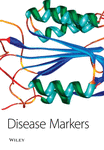Salivary Markers of Oxidative Stress and Their Relation to Periodontal and Dental Status in Children
Abstract
Background: Previous studies have shown that salivary thiobarbituric acid reactive substances are related to the periodontal status in adults. Such an analysis has not been done on children yet. The aim of our study was to analyze salivary markers of oxidative stress in relation to periodontal and dental status in children.
Methods: The periodontal and dental status of 82 consecutive pediatric dental patients was assessed. The oral hygiene index (OHI), the papillary bleeding index (PBI) and the caries index (CI) were assessed as clinical parameters. Markers of oxidative stress and antioxidant status were measured in whole saliva samples.
Results: Multivariate analysis of covariance showed that the variability of PBI explains 10.9% of the variance of salivary thiobarbituric acid reacting substances (TBARS). Advanced oxidation protein products (AOPP) were related to CI (eta 8.6%). Measures of antioxidant status (total antioxidant capacity and ferric reducing ability of saliva) were partially determined by OHI (13.6% and 7.2%) and PBI (16.9% and 7.9%).
Conclusions: Antioxidant status in saliva is related to oral hygiene and periodontal status. Salivary TBARS are a potential sensitive marker of periodontitis in children, similarly to adults, at least on a population level. Salivary AOPP are related to caries. Potential diagnostic value of the analyzed markers should be analyzed in further interventional studies.




